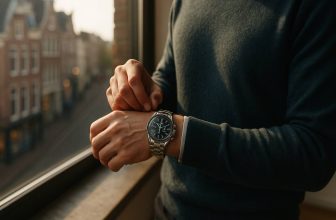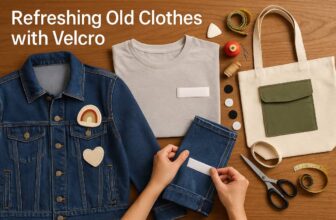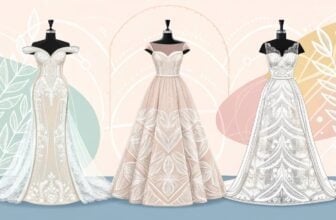Fashion plays a crucial role in every man’s life, impacting not only how others perceive us but also how we feel about ourselves. It is an essential form of self-expression that can boost confidence and convey personality without uttering a word.
In the following sections, we will explore a diverse range of fashion tips that cover everything from understanding your body type to mastering color coordination and selecting the perfect accessories. Whether you’re dressing for a casual outing or a formal event, these tips are designed to help you look your best.
Don’t hesitate to experiment with different styles and find what resonates most with you; after all, personal style is about discovering and embracing what makes you feel great.
Understanding Your Body Type
Identifying Different Body Types
Every man has a unique body shape that can be categorized into a few general types. The most common male body types are:
- Ectomorph: Characterized by a lean and often taller frame with narrow shoulders and chest.
- Mesomorph: A naturally athletic build with broad shoulders and a narrow waist.
- Endomorph: A softer, rounder body shape with the tendency to carry weight, particularly around the midsection.
Understanding which category you fall into is the first step in dressing in a way that flatters your physique.
Tailoring Your Clothing to Highlight Strengths and Downplay Weaknesses
Once you identify your body type, you can tailor your clothing choices to accentuate your best features and create a balanced look. Here are some tips for each body type:
- Ectomorph: Opt for fitted clothing that creates the illusion of a fuller frame. Layering is your best friend; try adding vests, jackets, or cardigans to build dimension. Avoid overly tight clothing which can make you look even slimmer.
- Mesomorph: With your naturally balanced build, focus on maintaining proportions. Tailored clothing will complement your shape, but be cautious of anything too tight that might come off as overly muscular. A well-fitted suit or blazer is a staple for you.
- Endomorph: The key is to elongate your body and create a sense of movement. Vertical stripes and darker colors can help slim your figure. Opt for structured clothing that provides a clear shape and avoid baggy clothing as it can add bulk.
Example Outfits for Various Body Types
To give you a better idea, here are some example outfits tailored to each body type:
- Ectomorph: Think of a well-fitted button-down shirt layered with a light jacket, paired with straight-leg jeans. Adding a scarf can also help create the appearance of more volume.
- Mesomorph: A classic outfit might include a tailored blazer with a white dress shirt and slim-fit chinos. A well-selected tie and some dress shoes will finish the look perfectly.
- Endomorph: Consider a dark, fitted dress shirt with a blazer and straight-cut trousers. The blazer adds structure, while the darker tones help create a slimming effect.
By recognizing your body type and making thoughtful clothing choices, you can ensure you’re always looking your best and feeling confident in your skin.
Building a Wardrobe Foundation
Creating a solid wardrobe foundation is crucial for any man looking to dress well. These staple items are versatile and timeless, ensuring you’re prepared for various occasions without needing an extensive closet.
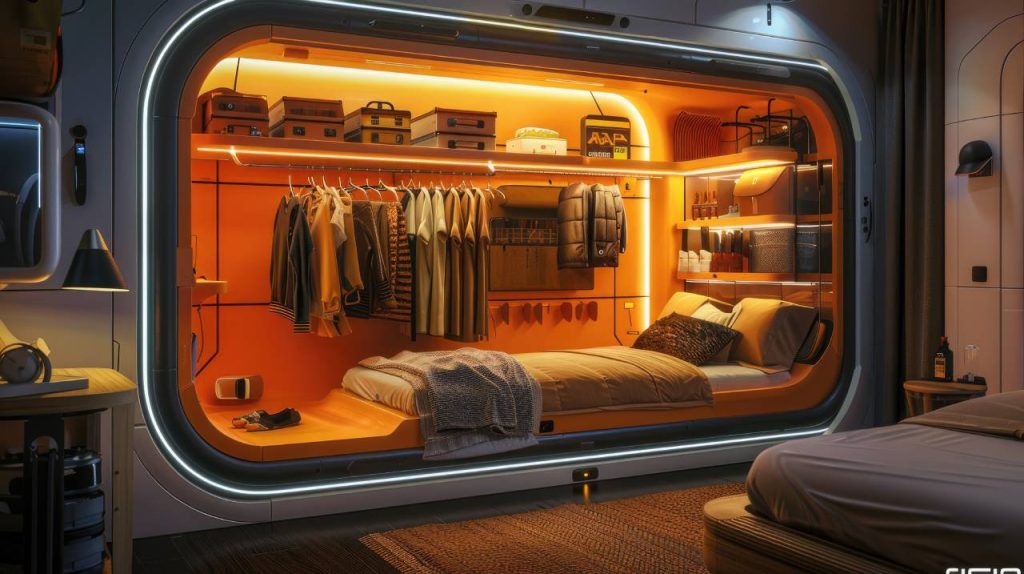
Essential Items Every Man Should Own
Building your wardrobe starts with acquiring essential pieces that can be mixed and matched easily. Here are a few must-haves:
- White Dress Shirt: A classic white dress shirt is the cornerstone of any man’s wardrobe. Its versatility allows it to be dressed up with a suit or dressed down with jeans. Opt for high-quality fabric like cotton or a blend with a bit of stretch for comfort. Ensure the fit is neither too tight nor too loose, providing a sharp, clean appearance.
- Dark Jeans: A pair of well-fitted dark jeans is indispensable. Dark wash jeans are incredibly versatile and appropriate for both casual and semi-formal settings. Look for jeans with a slight taper to the leg, which helps create a sleek silhouette. Remember, the right pair of jeans can be paired with everything from a simple T-shirt to a smart blazer.
- Classic Blazer: A well-tailored blazer is another essential item. It can effortlessly elevate your look, making it suitable for a variety of occasions, from business meetings to casual dinners. Neutral colors like navy, grey, or black are ideal as they pair well with multiple outfits. Focus on the fit—shoulders should align with your natural shoulder line, and sleeves should end just above the wrist bone.
Tips on Investing in Quality Pieces
Investing in quality pieces ensures longevity and comfort, saving you money in the long run. Here are some tips to help you make wise investments:
- Check Fabric Composition: Natural fabrics like cotton, wool, and linen are often more breathable and durable than synthetic blends. Look for higher thread counts and quality stitching, which indicate better craftsmanship.
- Prioritize Fit: No matter how expensive or stylish an item is, if it doesn’t fit well, it won’t look good. Pay attention to sizing charts and consider getting your clothes tailored for a perfect fit.
- Consider Cost-Per-Wear: Spend more on items you’ll wear frequently. For instance, a well-made blazer or a sturdy pair of jeans will provide more value over time than a trendy piece that may go out of style quickly.
- Look for Versatility: Choose pieces that can be easily mixed and matched with your current wardrobe. Neutral colors and classic styles are more adaptable and can be worn in various settings.
By focusing on these essential items and investing in quality pieces, you’ll build a wardrobe that’s not only stylish but also functional and long-lasting.
Dressing for Different Occasions
Understanding how to dress appropriately for different occasions is key to making a positive impression and feeling confident. Whether you’re heading out for a casual outing, a business meeting, or a formal event, following these guidelines will ensure you’re always dressed to impress.
Casual Outings
For everyday activities such as meeting friends or running errands, aim for a relaxed yet pulled-together look.
- T-shirt and Jeans Combos: The classic T-shirt and jeans combination is a staple for casual wear. Opt for a fitted T-shirt made from quality fabric like cotton. Pair this with dark wash jeans for a polished look or light wash jeans for a more laid-back vibe. The fit should be comfortable but not too baggy.
- Casual Footwear Choices: Sneakers are a go-to choice for casual footwear. Choose a clean, minimalist design in a neutral color for maximum versatility. Alternatively, a pair of loafers or casual leather shoes can elevate the look slightly while still keeping it informal.
Business Attire
Dressing in a business environment requires a balance between professionalism and personal style.
- Suit Selection and Fit: A well-fitted suit is a must-have for business attire. The suit should fit snugly but comfortably on the shoulders, with trousers that break at the top of the shoes. Navy, charcoal, and black are safe, versatile color choices. Ensure your suit is made from high-quality fabric for a refined appearance.
- Accessorizing with Ties and Pocket Squares: Adding accessories like ties and pocket squares can personalize your business look. Stick to classic patterns and colors that complement your suit. For ties, solid colors, subtle stripes, or small patterns work well. A neatly folded pocket square can add a touch of sophistication.
Formal Events
When attending formal events, elegant and refined attire is essential.
- Proper Tuxedo Fit: A tuxedo is the pinnacle of formal wear. Ensure it fits perfectly, particularly on the shoulders and waist. The jacket should slightly hug your body without being tight, and the trousers should have a slight break at the shoe.
- Luxury Accessories Recommendation: Elevate your tuxedo with luxury accessories. A high-quality bow tie, cufflinks, and a silk pocket square can add a touch of elegance. Consider wearing a luxury watch and polished dress shoes to complete the ensemble. For an extra touch of class, a pair of suspenders can also be a stylish addition.
Color Coordination and Patterns
Mastering color coordination and pattern mixing can elevate your style and make a striking impression. The right combinations can enhance your overall appearance and convey a sense of thoughtfulness in your outfit choices.
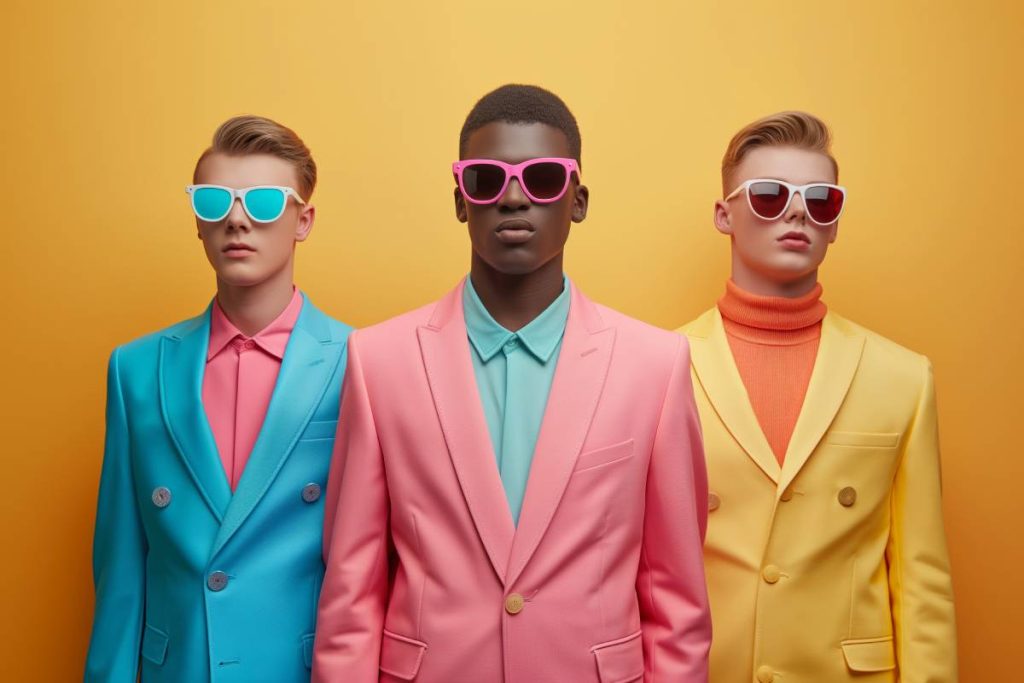
Basics of Matching Colors
Understanding basic color theory can greatly simplify the process of matching colors:
- Neutral Colors: Black, white, grey, navy and beige are versatile hues that can pair well with almost any other color. Incorporate these into your outfit as base pieces.
- Complementary Colors: These are opposite each other on the color wheel (e.g., blue and orange, red and green). Wearing complementary colors can create a vibrant and balanced look.
- Analogous Colors: These sit next to each other on the color wheel (e.g., blue, blue-green, and green). They pair well together and provide a harmonious blend, ideal for less contrast and a more cohesive appearance.
- Monochromatic Scheme: This involves shades and tints of a single color, offering a sleek and unmistakably put-together look.
Using the Color Wheel to Enhance Outfits
The color wheel is a useful tool for understanding how to combine colors. Here’s how you can use it:
- Triadic Color Scheme: Use three colors that are evenly spaced around the color wheel (e.g., red, yellow, and blue). This creates a strong and visually appealing outfit.
- Tetradic (Double-Complementary) Scheme: Select two complementary pairs (e.g., blue and orange, red and green). This approach provides plenty of contrast and interest.
- Split-Complementary Scheme: Choose one base color and pair it with two adjacent complementary colors (e.g., blue with yellow-orange and red-orange). It’s less intense than a complementary scheme but still vibrant.
Mixing and Matching Patterns Without Clashing
Mixing patterns can add depth and personality to your outfit, but it requires a careful approach:
- Start with a Neutral Base: Begin with a neutral color in your outfit and add patterns gradually, ensuring one piece acts as the focal point.
- Vary Pattern Size: Combine large patterns with smaller ones. For example, a broad striped shirt can be paired with a subtle, micro-patterned tie.
- Maintain a Common Color: Ensure that the patterns share at least one common color, which helps tie the look together.
- Limit the Number of Patterns: Stick to two or three patterns per outfit to avoid looking busy. Use solid pieces to break up the patterns and provide balance.
By applying these principles of color coordination and pattern mixing, you can create stylish and cohesive outfits that stand out for all the right reasons.
Grooming and Personal Hygiene
A well-groomed appearance is a vital aspect of presenting yourself confidently in various settings. Here’s how to maintain a grooming routine that complements your style:
Importance of a Regular Grooming Routine
Consistent grooming goes beyond just looking good—it impacts your overall wellbeing and self-esteem. A regular grooming routine helps you stay clean, healthy, and ready to tackle everyday challenges with confidence. It prevents common issues like body odor, greasy hair, and dry skin. Establishing habits such as regular showering, dental care, and moisturizing can significantly enhance your appearance and boost your confidence.
Basic Skincare Tips
Taking care of your skin is essential for a polished look. Here are some fundamental tips to maintain clear and healthy skin:
- Cleanse Daily: Use a gentle facial cleanser suitable for your skin type to remove dirt, oils, and impurities. Washing your face twice daily, in the morning and before bed, keeps your skin fresh and prevents breakouts.
- Moisturize: Hydrate your skin with a good quality moisturizer. Even if you have oily skin, moisturizing helps balance oil production and keeps your skin from overcompensating with excess oil.
- Sun Protection: Apply a broad-spectrum sunscreen with at least SPF 30 every day, regardless of the weather. Sun protection prevents premature aging, and sunburn, and lowers the risk of skin cancer.
- Exfoliate Regularly: Use an exfoliator once or twice a week to remove dead skin cells and promote cell renewal. This helps maintain smooth, bright skin.
Maintaining a Stylish Haircut and Beard Grooming
The right haircut and beard maintenance can define your look and enhance your features. Here’s how to keep your hair and beard in top shape:
- Frequent Haircuts: Schedule regular visits to your barber or stylist to keep your haircut sharp and well-maintained. Find a style that suits your face shape and lifestyle for the best results.
- Beard Care: Trim your beard regularly to maintain its shape and prevent unruly growth. Invest in a good quality trimmer and scissors for precision. Use beard oil or balm to soften the hair and condition the skin underneath.
- Shampoo and Condition: Wash your hair and beard using products designed specifically for them. This keeps them free from dirt and looking their best. Regular conditioning helps prevent dryness and makes hair more manageable.
By adhering to these grooming practices, you ensure that your overall appearance remains clean, stylish, and presentable, no matter the occasion.
Accessorizing Like a Pro
Accessories are the final touch that can elevate your outfit from good to outstanding. Thoughtfully chosen accessories add personality, sophistication, and functionality to your look. Here’s a guide to mastering the art of accessorizing:
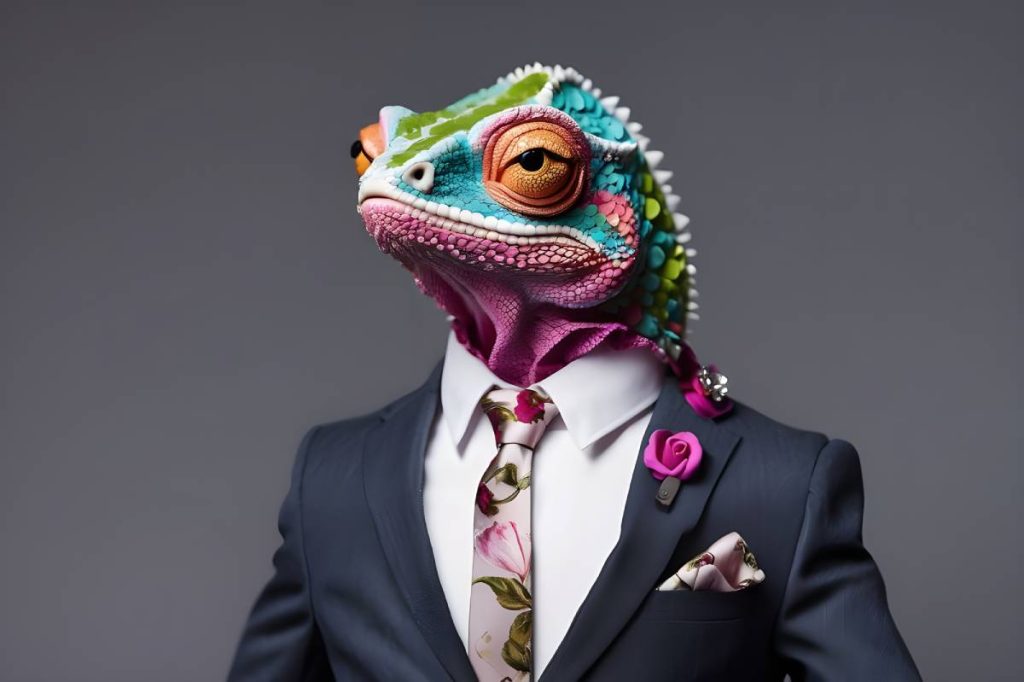
Selecting Appropriate Watches
A watch is more than just a timekeeping device—it’s a statement of style and elegance. To select the right watch for any occasion, consider the following tips:
- Match the Formality: Wear a classic, minimalist watch with a leather strap for formal events. For casual settings, opt for metals or colorful straps.
- Size Matters: Choose a watch that fits your wrist proportionately. Oversized watches can look bulky, while undersized ones may appear feminine.
- Functional Features: Consider your lifestyle and choose features that suit your needs, whether it’s a chronograph for sports activities or a smartwatch for tech enthusiasts.
Using Belts to Make a Style Statement
Belts are not only practical but can also serve as a standout element of your outfit. Here’s how to use them effectively:
- Color Coordination: Match your belt with your shoes for a cohesive and polished look.
- Material Choices: For formal attire, select leather belts in classic shades like black or brown. For casual outfits, experiment with fabric belts or those featuring unique textures.
- Buckle Styles: Choose belt buckles that enhance your look without overpowering it. Subtle buckles work best for formal settings, while bolder styles can add flair to casual outfits.
Impact of Sunglasses and Hats
Sunglasses and hats not only offer protection but also inject a dose of style and personality into your outfit. Here’s how to select the perfect ones:
- Sunglasses: Choose frames that complement your face shape. Aviators suit most face types, while wayfarers are great for square faces. Ensure the lenses offer UV protection for your eyes.
- Hats: Select hats that suit your face shape and the occasion. Fedoras and flat caps are ideal for vintage-inspired looks, while baseball caps and beanies offer a more casual vibe.
By mastering the art of accessorizing, you can add unique touches to your style, enhancing your overall appearance and ensuring you always look put-together and confident.
Staying Fashion Forward
Fashion is ever-evolving, and staying up-to-date with the latest trends can seem challenging, but it doesn’t have to be. By incorporating a few key strategies into your routine, you can effortlessly keep your wardrobe current and stylish.
Keeping Up with Fashion Trends
Staying informed about current fashion trends is the first step. Here are some accessible ways to keep your finger on the pulse of style:
- Follow Fashion Influencers and Blogs: Social media platforms like Instagram and Pinterest are brimming with fashion influencers who share daily outfit inspiration and trend reports. Subscribe to popular fashion blogs for detailed insights and tips on emerging trends.
- Check Fashion Magazines and Websites: Traditional fashion magazines, such as Vogue or GQ, and dedicated fashion websites often highlight upcoming trends and how to wear them.
- Observe Street Style: Pay attention to what people are wearing around you. Sometimes the best inspiration comes from real-world street style.
Incorporating Trendy Pieces into Your Existing Wardrobe
It’s easy to refresh your look by seamlessly integrating trendy pieces into your current collection. Here’s how:
- Start Small: Begin with accessories or smaller clothing items like scarves, shoes, or jewelry that reflect the latest trends. They can make a big impact without overhauling your entire wardrobe.
- Mix and Match: Combine trendy items with your classic staples. For example, pair a modern, oversized blazer with your go-to jeans and white tee.
- Focus on Versatility: Choose trendy pieces that complement multiple outfits and occasions, ensuring you get the most wear out of them.
Knowing When to Invest in or Skip a Trend
Not every trend suits everyone or is worth the investment. Here’s how to decide:
- Consider Your Style: Evaluate whether the trend aligns with your personal style. If it feels too out of character, it’s probably better to pass.
- Check Comfort and Fit: Trends that don’t fit well or feel comfortable are unlikely to be worn often. Prioritize comfort and proper fit before making a purchase.
- Long-term Appeal: Invest in trends with potential longevity, such as timeless patterns or colors. For fleeting trends, opt for more budget-friendly alternatives rather than high-end buys.
- Sustainability: Reflect on the environmental impact of trends. Consider whether the pieces are made sustainably and opt for brands that emphasize ethical fashion.
By staying mindful of how trends fit into your personal style, comfort, and sustainability values, you can keep your wardrobe fresh and forward-thinking without compromising on quality or essence.
Conclusion
Mastering the art of fashion involves a blend of strategic choices and personal expression. Recap these key tips to ensure you stay stylish and confident:
- Accessorize Thoughtfully: Selecting the right accessories can elevate your look, adding personality and sophistication.
- Stay Informed: Keep up with fashion trends by following influencers, reading fashion magazines, and observing street styles.
- Integrate Trends Seamlessly: Enhance your wardrobe by incorporating trendy pieces that complement your existing style.
- Invest Wisely: Focus on trends that align with your personal style, offer comfort, and promise longevity.
- Embrace Sustainability: Opt for sustainable and ethical fashion choices to support the environment.
Embrace your personal style confidently. Fashion is not just about following trends but also about expressing who you are. Your unique flair is what sets you apart, so don’t be afraid to experiment and showcase your individuality.
Final Thoughts on the Power of Well-Chosen Fashion
Well-chosen fashion has the transformative power to boost your confidence and reflect your inner self. From carefully selected accessories to staying updated with evolving trends, thoughtful fashion choices can make a significant impact on your overall presence.
Remember, the best fashion statement is authenticity—wear what makes you feel positive, comfortable, and uniquely you.
FAQs About Fashion Tips for Men
1- What are the essential wardrobe staples every man should own?
- Key wardrobe staples include a well-fitted suit, a versatile blazer, quality jeans, a white dress shirt, a selection of t-shirts, chinos, a good pair of dress shoes, and casual sneakers.
2- How can I determine my personal style?
- Start by exploring different styles through fashion blogs, magazines, and influencers. Pay attention to what you feel most comfortable and confident in. Experiment with various clothes and accessories to see what resonates with you. Over time, you’ll identify patterns and preferences that define your personal style.
3- How do I choose the right fit for my clothing?
- Fit is crucial in fashion. Ensure your clothes are neither too tight nor too loose. Shirts should fit comfortably around the chest and shoulders without excessive bunching or tightness. Pants should be fitted around the waist and fall naturally without excessive length or bagginess. Don’t hesitate to visit a tailor for adjustments.
4- What are some fashion mistakes to avoid?
- Common fashion mistakes include wearing ill-fitting clothes, over-accessorizing, neglecting grooming, and failing to dress appropriately for the occasion. Avoid following trends blindly without considering if they suit your style and body type.
5- How can I mix and match outfits?
- Start with neutral and versatile pieces that can be easily mixed and matched. For instance, a navy blazer can be worn with chinos, jeans, or dress pants. Experiment with layering and incorporating different textures to add dimension to your outfits.
6- What types of shoes should every man have?
- Essential shoes include a pair of classic black or brown dress shoes, stylish yet comfortable sneakers, versatile loafers, and casual boots. Each type serves different occasions and outfits, providing a solid foundation for any look.
7- How do I accessorize without overdoing it?
- Start with simple, classic items like a quality watch, a pair of cufflinks, or a tie clip. Ensure your accessories complement your outfit rather than overpower it. Less is often more when it comes to accessories.
8- What colors should I incorporate into my wardrobe?
- Start with neutral colors like black, white, navy, and grey. These can be easily mixed and matched. As you become more confident, experiment with bolder colors that align with your skin tone and personal style.
9- How can I keep up with fashion trends without breaking the bank?
- Focus on integrating a few trendy pieces with your classic wardrobe staples. Shop sales or visit thrift stores for budget-friendly options. Investing in timeless, quality pieces that don’t go out of style will save money in the long run.
10- What should I consider when buying a suit?
- Fit is paramount. The suit should mold to your shoulders and taper down your waist. The jacket should fall around mid-crotch, and the sleeves should show a half-inch of your dress shirt cuffs. Opt for versatile colors like navy or charcoal for maximum versatility.
These FAQs aim to guide you on your fashion journey, ensuring you make informed and confident choices that enhance your style.

